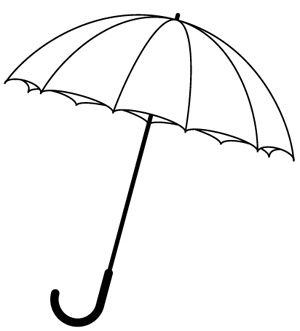![]()
FLOODS HAPPEN BECAUSE of exceptionally heavy rain or storms, it’s true, but that’s only part of the story. The amount of rain that falls within a certain period of time is significant in causing this weather phenomenon too – and human actions can make the situation worse.
Think about it – almost everywhere in the world has rain and some places more than others, so why aren’t we all drowning in endless floods? The simple answer? The water travels or changes form: some of it evaporates, some of it soaks into the ground and some runs off into streams and rivers that eventually carry it to the sea.

But it’s all a matter of quantity and speed. If surface water builds up to such an extent that these natural ‘overflow’ mechanisms can’t cope, flooding may occur. Recent weather, soil type and terrain also play a part. If the ground has already reached saturation point due to previous heavy rainfall, it may not be able to soak up more moisture, while dense, clay soils are more impenetrable to water than light, sandy soils. Mountains can add to the risk of flooding, too, by channelling rain into dangerous torrents, and rivers may become so swollen with extra water that they cannot contain it and burst their banks.
Concrete pavements and asphalt roads are good for us humans, keeping our feet free of mud and giving our cars smooth surfaces to drive over. But these impermeable materials also make it harder for water to soak into the soil, and can thus contribute to floods. Storm drains, too, if poorly maintained or – worse still – blocked, leave rainwater with nowhere to go but rising upwards.
Flash floods are sudden floods that can occur without warning and are potentially lethal, catching people off guard and leading to fatalities. The source of such a flood may be a thunderstorm a distance away that, in a short space of time, unleashes large quantities of water that are beyond the ground’s ability to soak up. In less than a minute, the water level may rise by up to a metre (3 feet) and eyewitnesses have described seeing a rushing ‘wall of water’.
Some parts of the world are more flood-prone than others. Cherrapunji, at the foot of the Himalayas in northeast India, is one such area – and one of the wettest places on the planet. Because of the weather patterns and the mountainous terrain here, monsoon rains and tropical cyclones can produce downpours of up to 200mm (8 inches) per hour. Rains of such magnitude bring life to the earth, but they can also produce flash floods and mudslides that take life, including that of humans.
THE WETTEST PLACE ON EARTH?
• Cherrapunji receives more than 10,000 millimetres (394 inches) of rain per year. But 1861 was especially wet, with an annual total of 26,000 millimetres (1,024 inches) of rain.
• Mawsynram, in the Khasi Hills of northeast India, goes one better than its near neighbour Cherrapunji with an average total annual rainfall of 11,430 millimetres (450 inches), most of which falls in six months.
• The island of Réunion in the Indian Ocean enjoys the distinction of having perhaps the heaviest downpours ever. Over a period of twenty-four hours in March 1954, 1,850 millimetres (73 inches) of rain fell there, followed closely on 7 and 8 January 1966, with 1,825 millimetres (72 inches).
• Guadeloupe, in the Caribbean, was drenched with 38 millimetres (1½ in) of rain in a single minute on 26 November 1970.
• Mount Wai’ale’ale in Hawaii sees almost continual rain, with only approximately two weeks’ worth of dry days per year.